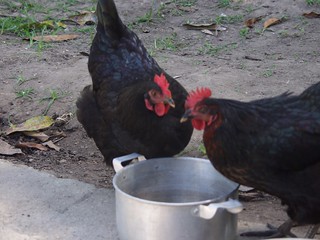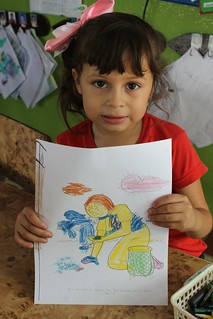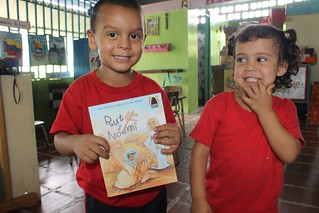We have firsthand experience of this. Backyard chicken flocks are a staple in Venezuela, as they were in the rural South Dakota of my childhood. Once, during a Skype call, my mother, who grew up on a farm, heard one of our roosters crowing and closely guessed its age by the tone of its crow. I was quite impressed.
Besides the crowing rooster in the parallel Gospel accounts of Peter’s denial of Christ, our Lord speaks of a rooster in Mark 13:35. Hens and their chicks are mentioned in Matthew 23:37 and Luke 13:34. There are no clear references to chickens in the Old Testament. The Hebrew word, zarzir, in Proverbs 30:31 is sometimes translated “strutting rooster”, but other translations render it, “greyhound”, while in Job 38:36 the word, sekvi, also is of uncertain meaning. Sometimes it is translated as “rooster”, but otherwise as “heart”.
In 1932, an onyx seal was found on a tomb 12 kilometers northeast of Jerusalem, dating back to the the seventh century BC. It features a fighting rooster, with the inscription: “Belonging to Jaazaniah, servant of the King”. This could be the man named in 2 Kings 25:23 and Jeremiah 40:8.
Why roosters are worth the noise
Our flock has grown to 20 hens, two roosters and 60 chicks. We sacrificed four hens who were no longer laying (not in a propitiatory sense) for Easter dinner for our congregation. It has been some time since we have had to buy eggs (which are selling for $5 for a carton of 30). In fact, Luz Maria has sold eggs to people who want a farm-fresh, organic product. Once I got into an online debate with people who tried to tell me that it’s not worth the trouble to keep roosters. They are noisy, when there’s more than one, they fight over the hens, and hens will lay eggs anyway. But the hens are healthier when they maintain their natural reproductive cycle, you do not have to buy new hens to replace the ones that have stopped laying, and many people here consider eggs produced with the help of roosters to be of higher nutritional quality. In addition to providing eggs and meat, free-range chickens help us control termites and biting ants.
César Delgado confirmed on Easter Sunday
On Easter Sunday, March 31, 2024, we received into communicant membership César Miguel Delgado Rojas. He chose as his confirmation verse Isaiah 41:13, “For I, the LORD your God, will hold your right hand, saying to you, Fear not, I will help you.” The second part of the book of Isaiah, chapters 40 to 66, is known as the Book of Consolations and pictures the restoration of the remnant of Israel, the messianic King, and the final glory of the Church. “Fear not, I will help you” or “Fear not, I am with you” is a favorite phrase of the prophet.
Deborah, woman of GodOn March 8, 2024, we concluded “Old Testament I”, an online course for deaconesses in training, with a study of the Book of Judges. Deborah, prophetess, wife and judge, was a woman who loved Jehovah and his Word. God gave her wisdom from her and she used it for the good of her neighbors, giving them advice from her.
We know more about Deborah than about the five Old Testament prophetesses, including Miriam, Moses' sister; Huldah, advisor to King Josiah (2 Kings 22:8-20; 2 Chronicles 34:22-28); Isaiah's wife (Isaiah 8:3); and the mother of King Lemuel (Proverbs 31:1). Prophetesses mentioned in the New Testament include Anna, the widow who blessed the Baby Jesus in the temple (Luke 2:25-35); Philip's daughters (Acts 21:9); and the prophetesses of Corinth (1 Corinthians 11:5).
Although the Scriptures mention prophetesses, none were public speakers during a meeting of God's people or priests in his temple or apostles or pastors of the church. In fact, St. Paul's reference to prophetesses in 1 Corinthians 11 occurs in a passage that emphasizes the leadership role of a husband. The Scriptures always distinguish the roles of men and women. Women can proclaim God's Word publicly through song (like Miriam and Deborah) and privately through counsel. Furthermore, the Scriptures strictly warn against false prophetesses (Ezekiel 13:17) such as Noadiah (Nehemiah 6:14) and Jezabel (Revelation 2:20-23).
Continuing deaconess training
On March 19, the Rev. Dr. Sergio Fritzler from Concordia El Reformador Seminary in the Dominican Republic began the orientation of 16 pastor various countries for the next course, "Diaconal Practice 2" with a devotional on the mercy of God. The next step was the orientation of more than 40 women from Venezuela and other countries on March 21, 2024.
Medicines from GLO distributed
On Sunday, March 3, 2024, we distributed the bulk of non-prescription medicines received from Global Lutheran Outreach. The rest were distributed through in-person visits to those whose disabilities prevented them from leaving the house.





























